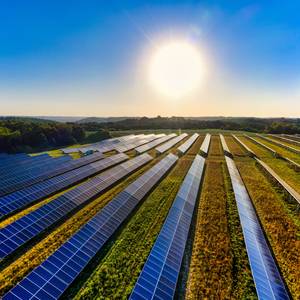Adaptation strategies attempt to protect the functioning of the existing system from substantial change

Those who engage in adaptation strategies recognise and accept that there are inevitable impacts from decarbonisation efforts.
What is an adaptation coping strategy?
Adaptation strategies attempt to protect the functioning of the existing system from substantial change. Those who engage in adaptation strategies recognise and accept that there are inevitable impacts from decarbonisation efforts. In response, they try to minimise the disruption caused by decarbonisation efforts by modifying their behaviour or operations.
Common adaptation strategies include:
- Attempts to try to preserve the status quo in a ‘softer’ way than through outright resistance by adapting incrementally
- Attempts to avoid the negative consequences of the energy transition.
Importantly, incremental adaptation strategies are often insufficient to fully address the implications of decarbonisation strategies. In these situations, it will be necessary to make further adjustments. For example, coal plants that install solar PV to help power operations are likely to eventually have to adapt in deeper ways since they are continuing to engage in carbon-intensive activities (i.e. burning coal).
Who engages in adaptation strategies?
Adaptation strategies are undertaken by all types of actors at all levels.
At the international level, these strategies are mainly adopted by national EU parliamentarians in Brussels, and politicians from carbon-intensive regions. At the national level, adaptation strategies tend to be undertaken by two main sets of actors: fossil fuel industry company representatives, and governments. At the regional and local levels, adaptation strategies are adopted by local citizens, mainly at the individual level, as well as by local authorities.
What do adaptation coping strategies look like?
Adaptation activities “[seek] to reduce vulnerability to present and future change by minimising the direct and indirect impacts” (O’Brien 2012: 669). The type of adaptation possible depends upon who is acting and the resources they have available to them.
For example, energy company executives can adapt by closing coal plants, laying off workers, or implementing emissions-reducing innovations in power plants to allow for a more gradual phase-out. Energy companies or entrepreneurs might start up new renewables divisions or companies, or begin to offer energy services.
Regional, provincial, and local authorities might adapt by implementing energy efficiency plans for schools, hospitals or other public buildings. National or regional governments sometimes adapt by working with local universities to design training programs for low-carbon industrial activities.
For workers and communities dependent on fossil fuel industries, it is increasingly necessary to adapt by seeking out different jobs. This can include migration to other regions or countries to find other opportunities.
Examples
Investing in renewables
Planning and funding solar, wind, geothermal, biomass, or hydro, and district heating
What prompts adaptation strategies?
Strategies for adaptation can be undertaken either in response to impacts that are already occurring, or in anticipation of decarbonisation activities that are expected to occur. For example, industry-led adaptation strategies can be prompted by a government’s announcement of a precise date for coal phase-out (response), or by ongoing progress of technological innovations that might help reduce industrial emissions (e.g., air pollution) (anticipation).
Individual-level adaptation strategies can be prompted by, for example, actual or threatened job cuts, or by anticipated consequences of the energy transition on energy prices.
When are adaptation strategies most likely?
Adaptation strategies are more likely to occur in regions that are experiencing significant destabilisation of existing industry. This usually happens in mid- to advanced transition phases. In these regions, it is apparent that decarbonisation policies will be created and enforced and there will be a need to find ways to live with these policies. While many actors will still adopt resistance strategies, others will begin to make changes to adapt to new circumstances.
What are other types of coping strategies?
- Resistance strategies seek to preserve current conditions and resist drivers of change. Read more
- Transformative coping strategies challenge the stability of the existing system by introducing fundamentally new ways of thinking, acting, doing and organising. Read more
Sources
Barnes, M. L., Bodin, Ö., Guerrero, A. M., McAllister, R. R., Alexander, S. M., & Robins, G. (2017). The social structural foundations of adaptation and transformation in social–ecological systems. Ecology and Society, 22(4).
Nacke, L., Jewell, J., Cherp, A. (2021). A diagnostic framework for feasibility of low carbon transitions in coal dependent regions. CINTRAN Project Report. European Union Horizon 2020 grant agreement no. 884539.
O’Brien, K. (2012). Global environmental change II: From adaptation to deliberate transformation. Progress in Human Geography, 36(5), 667-676.


